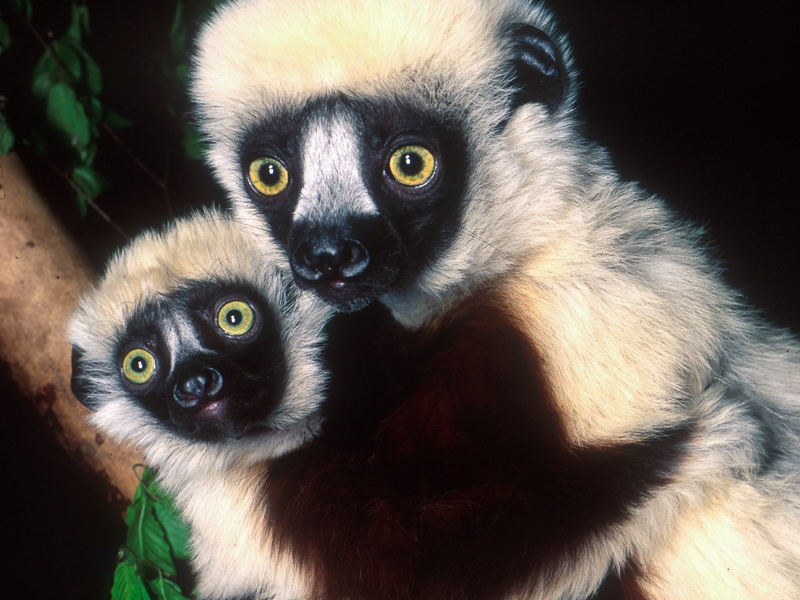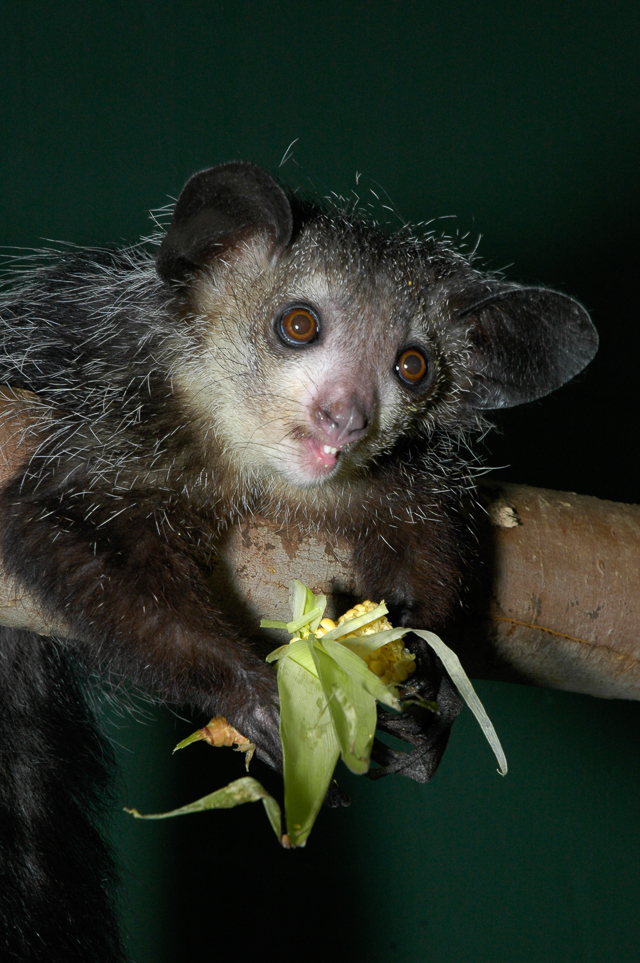New paper predicts COVID-19 risk in lemurs and lorises
For immediate release ‐ April 20, 2021
Contact: Jon Pishney, 919.707.8083. Images available upon request
 Coquerel’s sifaka (Propithecus coquereli) is the lemur made famous by the kids’ show Zoboomafoo. A new study predicts that members of the genus Propithecus may be at high risk of contracting COVID-19. Note that these are representative photos of animals at increased risk of COVID-19. The Duke Lemur Center has not had any known cases of COVID-19 among any of their animals and is currently closed to the public. Photo: David Haring.
Coquerel’s sifaka (Propithecus coquereli) is the lemur made famous by the kids’ show Zoboomafoo. A new study predicts that members of the genus Propithecus may be at high risk of contracting COVID-19. Note that these are representative photos of animals at increased risk of COVID-19. The Duke Lemur Center has not had any known cases of COVID-19 among any of their animals and is currently closed to the public. Photo: David Haring.
The novel coronavirus SARS‐CoV‐2, which in humans leads to the disease COVID‐19, has caused global disruption and more than 3 million fatalities since it first emerged in late 2019. Currently, infection rates are at their highest point globally and are rising rapidly in some areas due to more infectious variants.
The primary target of SARS‐CoV‐2 is the cellular receptor angiotensin‐converting enzyme‐2 (ACE2); SARS-CoV-2 gets into our cells by binding to ACE2 receptors on the cell surface. Recent sequence analyses of the ACE2 gene predict that many nonhuman primates are also likely to be highly susceptible to infection.
An international and widely collaborative study led by Amanda Melin and James Higham, and involving Dr. Julie Horvath, Head of the Museum’s Genomics & Microbiology (G&M) Research Lab and jointly appointed at NC Central University in the Biological and Biomedical Sciences Department, reinforces previous results and suggests several clades of lemurs have high potential susceptibility to SARS‐CoV‐2 infection.
“We sequenced the genomes of many lemurs and lorises from the Duke Lemur Center and compared their ACE2 gene sequence to humans to predict which of these species may also be susceptible to COVID-19,” says Horvath. “Unfortunately, some of the most highly endangered species, such as the aye-aye (genus Daubentonia) and members of the genera Avahi and Propithecus, are likely susceptible to COVID-19, based on the high similarity of their ACE2 gene sequence to humans.”
Given that lemurs are endemic to Madagascar and among the primates at highest risk of extinction globally, further understanding of the potential threat of COVID‐19 to their health should be a conservation priority. And all feasible actions should be taken to limit their exposure to SARS‐CoV‐2.
“We hope the information from our publication will be useful to people managing these species across the World,” Horvath adds.
Read “Variation in predicted COVID‐19 risk among lemurs and lorises,” from the American Journal of Primatology.
Similarly, the new study predicts the rare and highly endangered aye-aye may be at high risk of contracting COVID-19. Photo: David Haring.


